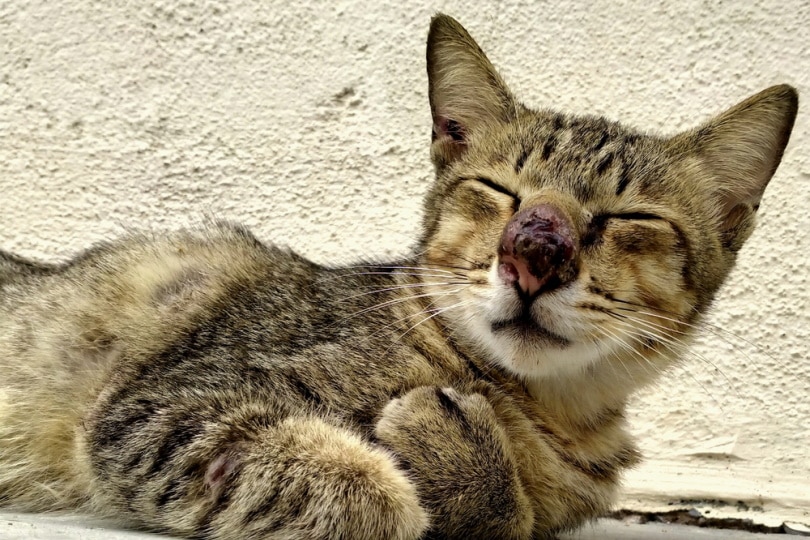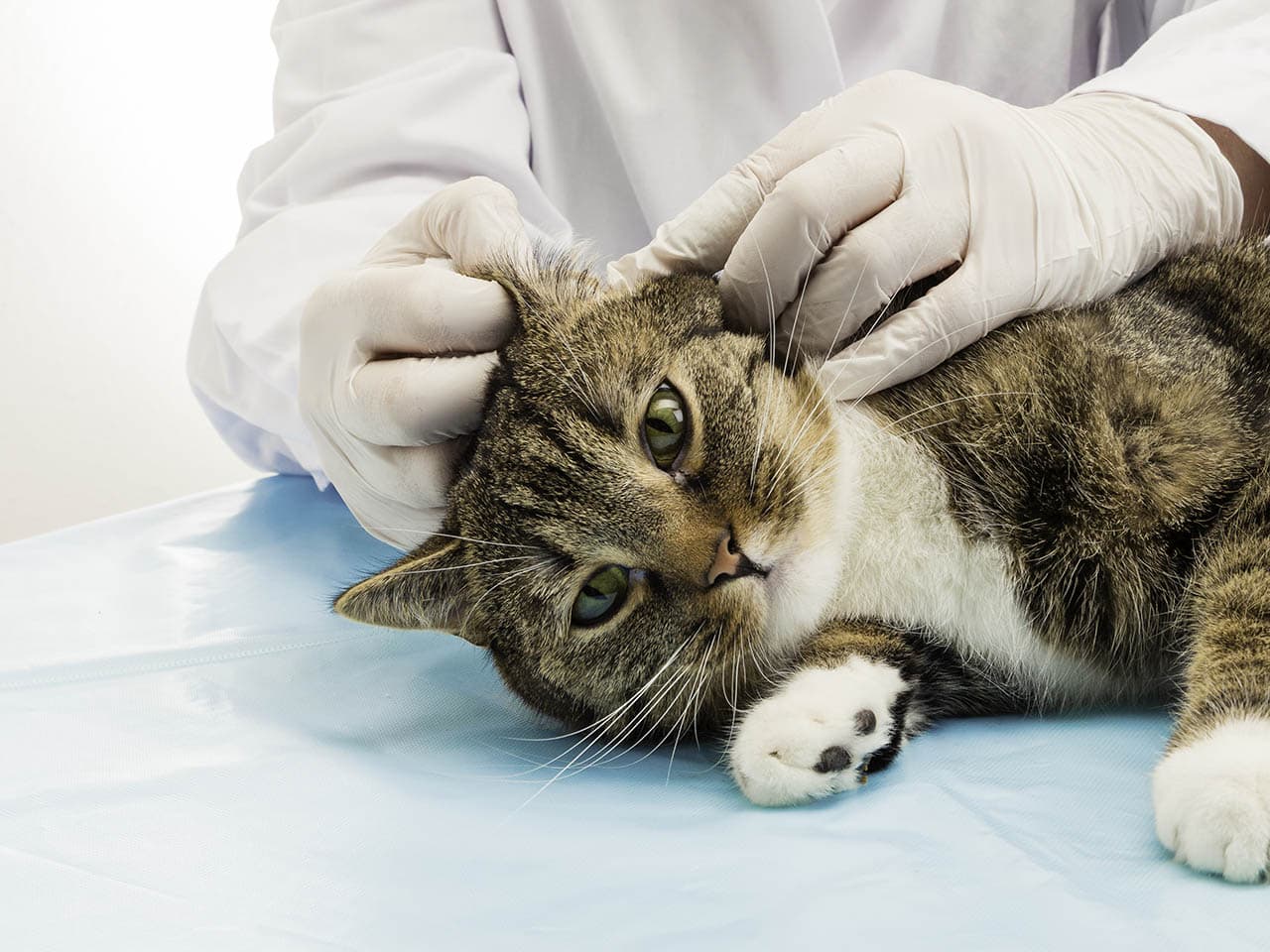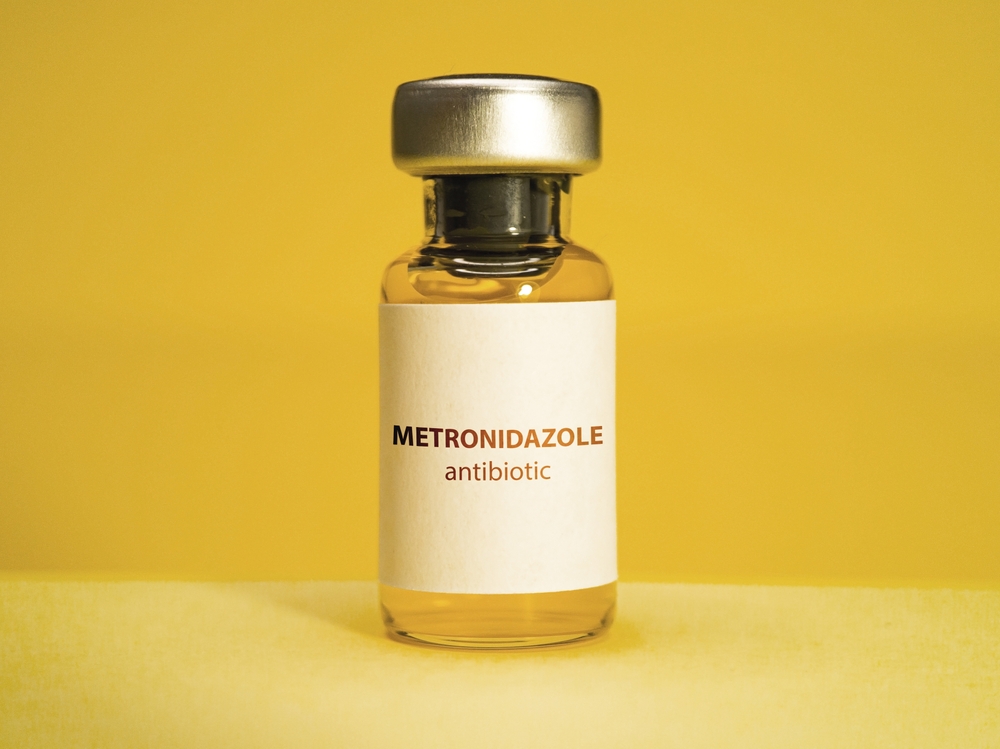Noses are funny things. In cats, we love to look at them, take photos of them, and, most of all, boop them! Cat noses, however, can display changes that indicate your cat is sick or might get sick soon. And no, we are not discussing whether it’s wet or dry.
They should generally be dry, but some cats have wet noses (especially breeds like Persians). Overall, the skin and hair of cats can be an easy indicator of how your cat is doing.
Sudden changes in their coat, such as suddenly becoming dry and flaky, can be reasons enough to get your cat in to see a vet. Lumps and bumps are no different and are especially easy to spot on the bridge of the nose since this area tends to have slightly less hair than other parts of their body (especially in medium and long-haired cats. This is also because there isn’t a lot of skin or fat to obscure even the smallest of bumps.
That can be good because spotting an issue sooner rather than later generally makes it easier to address—especially when it comes to cats. Also, not all bumps are necessarily harmful. Read on to learn more!
Anatomy of the Cat Nose
Cats have two hairless nostrils, which make up most of the nose “pad,” and a philtrum, which connects the nose pad to the lip. Above the pad lies the bridge of the nose, which runs from the nose pad to just below the eyes. It is made of soft tissue, including skin and fat, that sits atop the bone of the skull.

What Changes On the Nose Bridge Should Be Concerning?
A bump can be concerning, but other signs to look out for include:
- Redness
- Difficulty breathing or open-mouth breathing
- Sudden noisy breathing
- Foul breath
- Discharge from the nose
- Bleeding from the bump
- Scabbing of the bump
- Hair loss over the bump
- Itching or pawing at the bump
These signs indicate there could be more going on than just a simple bump.
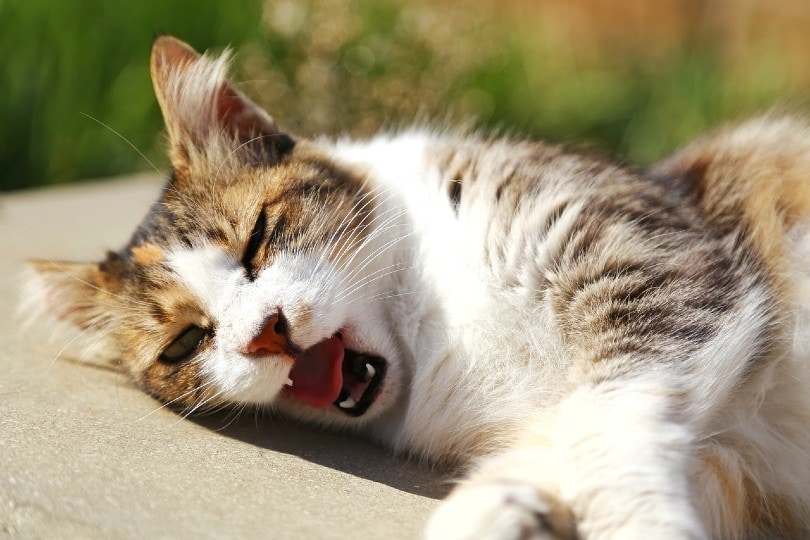
What Normal Changes Could Cause a Bump in This Area?
A cat’s hair often changes direction by their nose, and it can stand up a bit more and give the appearance of a bump. Or a cat may have scratched their nose and caused fur to stand up and look more prominent.
What Are Common Causes of Bumps in This Area?
Cats often get into mischief! Bumps can be simple injuries caused by just bumping into something, which may lead to tissue swelling that can generally resolve on its own without further care.
Cats are also prone to bug bites in this area since they may stick their noses into all sorts of interesting places. Some cats are more reactive to specific bug bites, especially mosquitos, which can show up as bumps on the nose (and on the ears, as well).
Infections in the mouth, in particular with the teeth on the upper jaw, can also lead to a facial abscess, which may look like a bump on the nose.
In older cats, bumps can also be different types of skin cancers. Squamous cell carcinomas, mast cell tumors, and nasal lymphoma are some that are more commonly seen in this area.
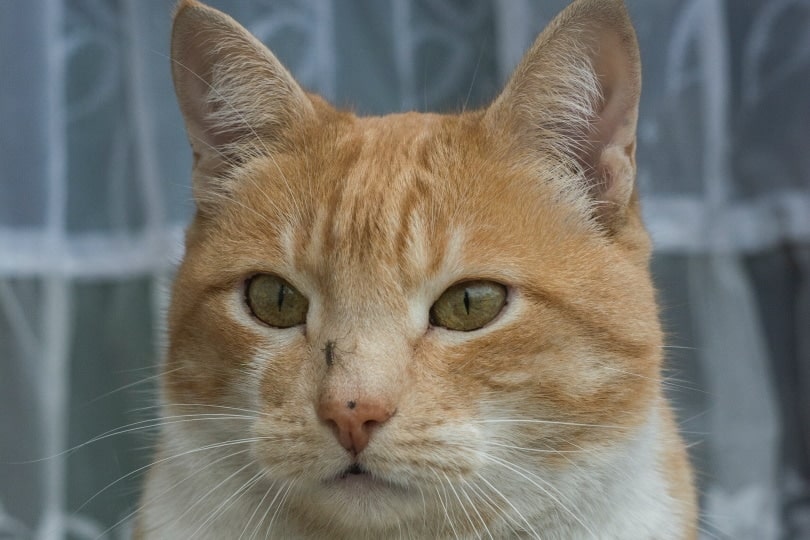
What to Do if You Find a Bump on the Bridge of Your Cat’s Nose
First, get a photo of your cat’s nose, provided that they seem to be feeling ok. Next, contact your vet and let them know what your concerns are. Show them the photo, which can help your vet decide if your cat needs to be seen and how urgently.
When Should You Be Concerned?
If you find a bump and, after discussing it with your vet, decide to monitor it at home, here are a few things that can determine if and when you should check back for a reassessment:
- If it doesn’t go away in a day or two
- If it is getting noticeably larger
- If it seems to bother your cat or be painful to your cat
- If nasal discharge develops
- If your cat is squinting
- If your cat has changes in their breathing
- Other changes to your cat’s face or behavior that aren’t normal
Treatment Options
Sometimes treatment involves simple monitoring at home, and the bump will resolve on its own. This is the best-case scenario. Expect most bumps to settle in a day or two.
Get a photo when you first notice the bump. It will help you to decide if it is getting bigger, smaller, or not changing. It can be even more helpful to hold up an object (like a coin, eraser, or ruler) to give you a perspective on the size of the bump if you’re worried that it is getting larger.
If your vet thinks an infection is present, they might prescribe an antibiotic to eliminate the infection and swelling. It can often take several days before the swelling improves.
If there was an allergic reaction to a bug bite, your vet might send you home with an anti-inflammatory medication to reduce the swelling. It can reduce the size of the bump very quickly, sometimes within hours.
Or, if there was trauma involved, and your cat is making it worse by scratching the area, your vet might consider using an Elizabethan collar (or e-collar).
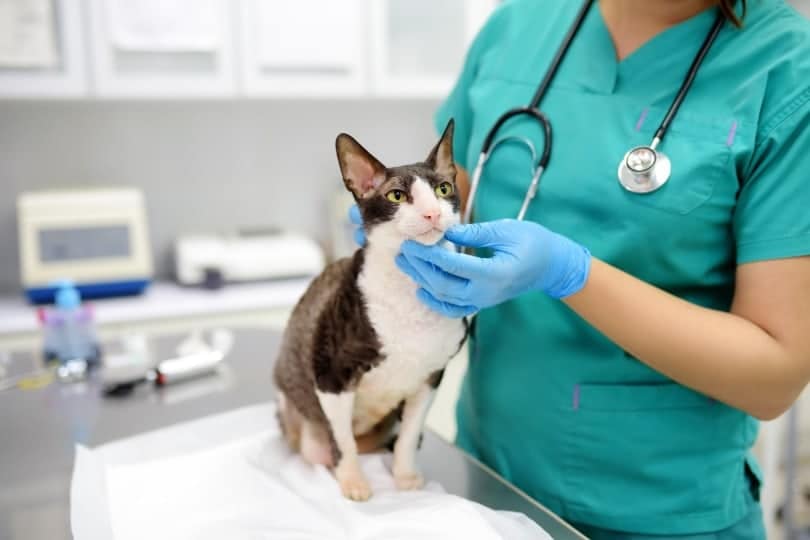
Conclusion
With these helpful tips, you should now know how concerned you need to be about a bump on the bridge of your cat’s nose, as well as how to get them the help they need. Remember, your instinct is essential in situations like this. So if something doesn’t seem right, or if your cat isn’t recovering as quickly as you’d expect, don’t hesitate to reach out to your vet and ask for help.
Featured Image: Ijat Seeing, Shutterstock

